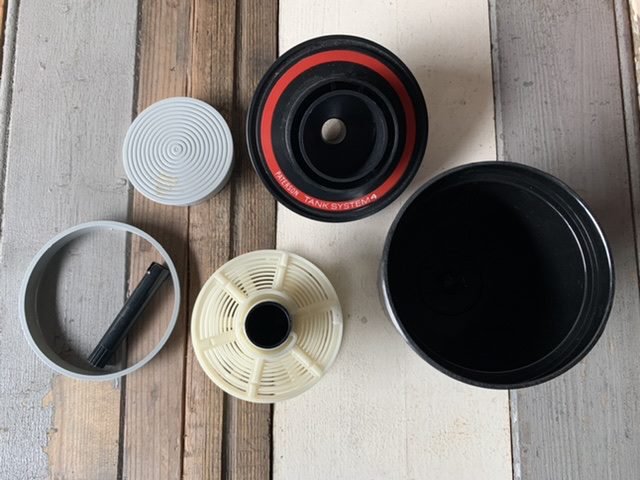Disposable Camera Developing - What you Need to Know
Developing disposable cameras is a straightforward process, with several options available to suit your needs. Here's a comprehensive guide to help you choose the best method for developing your disposable camera film.
There are a lot of options out there and if you’re new to disposable cameras of film photography, finding a photo lab the works for you might be overwhelming. Here’s a look at all of your options for getting your disposable camera developed!
Local Drugstores and Retail Chains
Many local drugstores and retail chains offer film developing services for disposable cameras. Popular chains like CVS, Walgreens, and Walmart provide convenient options, often returning your developed photos within a few weeks. These services typically include physical prints and a CD with digital scans.
Pros:
Convenient; widespread locations.
Cons:
Quality can vary; most only offer low-quality scans.
Not all branches offer film services; film is often shipped to third-party labs.
Poor customer service and lack of personalized attention.
Most do not return your film negatives.
Developing Costs:
Walmart: Charges by the number of exposures. For example, 27 exposures with prints cost $10.96, and 36 exposures with prints cost $13.96. Find out more at Walmart
CVS: Also charges by the number of exposures. For instance, 27 exposures with prints cost $15.86, and 39 exposures with prints cost $18.82. Find out more at cvs.com
Walgreens: Offers film processing for 24 exposures with prints at $15.99. Find out more at Walgreens Photo
These retailers often do not develop film on-site, leading to longer processing times. The mass-production approach may result in less personalized service, and there's a risk of negatives not being returned. Due to these factors, many photography enthusiasts prefer alternative options.
Specialty Photo Shops
For higher quality and more personalized service, specialty photo shops are an excellent choice. These establishments handle film with care and provide superior prints and scans. The staff's expertise in various film types and processing techniques can enhance the outcome of your photos.
Pros:
High-quality prints and scans; expert handling.
Cons:
May be more expensive; fewer locations.
If you reside in a larger city, you may have access to such stores. Pricing varies by shop, so it's advisable to contact local photo shops for specific information.
Mail-In Film Developing Services
Mail-in services offer a convenient alternative, especially if local options are limited. Companies like The Darkroom, Mpix, and Process One specialize in developing disposable cameras. The process involves mailing your camera to the service provider, who then develops the film and returns your prints and scans.
Pros:
High-quality results; convenient for those without local options.
Cons:
Longer turnaround time due to shipping; potential for higher costs.
Developing Costs:
Shutter Junkies Photo Lab: Shutter Junkies Photo are the disposable camera developing experts! Developing starts at just $12. Go to ShutterJunkies.com to get your disposable developed!
The Darkroom: Offers developing services starting at $16, with options for prints and digital scans. Find out more at thedarkroom.com.
Mpix: Develops disposable cameras and uploads images to a secure online album within 1-2 days after receiving your film by mail. Find out more at Mpix.
Process One: Develops all types of disposable cameras, including Kodak Funsavers and Fuji QuickSnaps. Find out more at Process One.
Many of these labs have been in business for years and develop all types of film. Prices and policies can change so check to find out if they return your negatives, what their turn-around time is, and compare pricing with the results you get.
DIY Development
For the photography enthusiast, developing your own film can be a fulfilling project. While this requires more effort and the purchase of specific chemicals and equipment, it allows complete control over the development process. Resources and kits are available online to help beginners.
Pros: Full control over the development process; rewarding.
Cons: Time-consuming; initial setup cost, cost of maintaining/replacing chemistry.
Choosing the Right Service
When deciding where to develop your disposable camera, consider the following factors:
Quality vs. Convenience: Determine whether you prefer the convenience of a local store or the quality of a specialty shop.
Budget: Prices can vary significantly between different services.
Turnaround Time: Some options might be quicker than others, especially if you need your photos soon.
Conclusion
When deciding where to develop your disposable camera, consider factors such as convenience, quality, cost, and whether you want your negatives returned. Local drugstores and retail chains offer convenience but may compromise on quality and personalization. Specialty photo shops provide superior quality and service but may come at a higher price and be less accessible. Mail-in services strike a balance between convenience and quality, making them a viable option for many.
By evaluating these options, you can choose the best method to develop your disposable camera film, ensuring your memories are preserved as you envision.
Disposable Camera Developing FAQ
Does Walmart Develop Disposable Cameras? - Yes
Does CVS Develop Disposable Cameras? - Yes
Does Walgreens Develop Disposable Cameras? - Yes
Does Target Develop Disposable Cameras? - No
Does BestBuy Develop Disposable Cameras? - No
Does Costco Develop Disposable Cameras? - No
How much does it cost to develop a disposable camera? - Between $10 and $24
Can I get digital pictures from my disposable camera? - Yes


